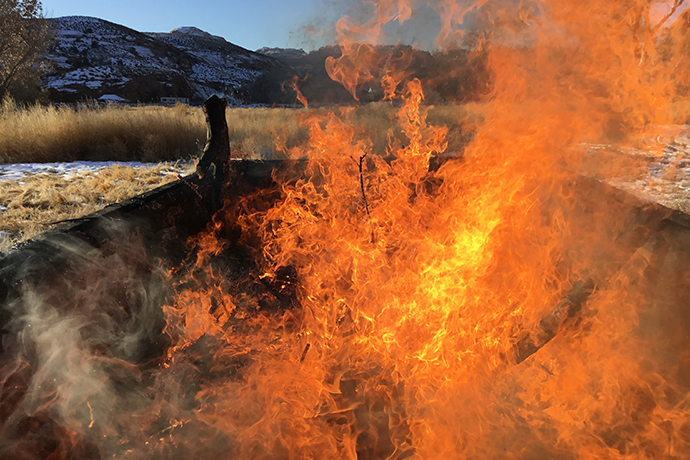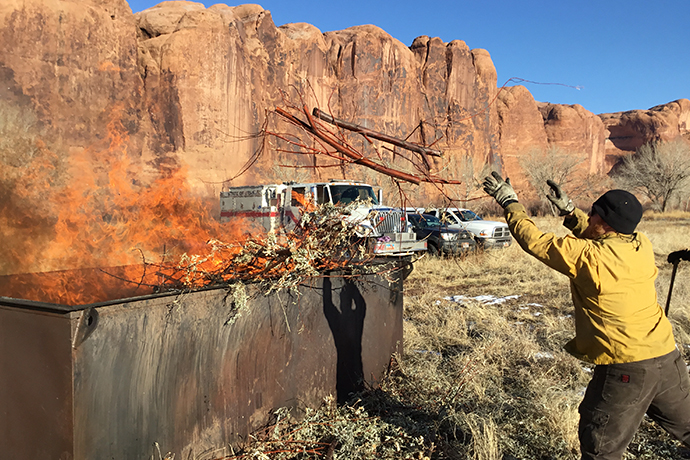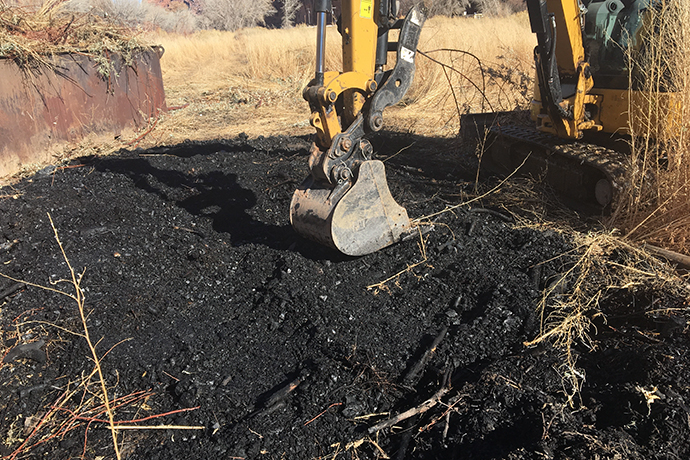Big Box Kilns Fight Fire (Greenhouse Gas Emissions and Poor Soil) with Fire
We have used fire to cook, heat, build, clear land, and manipulate our environment ever since, well, humans discovered how to make fire appear at will. One of the lesser-studied uses of fire is to improve soil quality. The soil amendment resulting from burnt biomass such as trees and plants is called biochar.
Biochar is the result of the thermochemical separation that occurs when biomass is burned to temperatures ranging from 750 to 1,100 degrees F. The resulting biochar is highly porous and has a large surface area. When added to soil, it increases water-holding capacity; extending the time that water is available to plants. Biochar’s use as a soil amendment dates back at least 7,000 years to when it was used by indigenous Amazonian people to improve nutrient-deficient soil.
More recently, Darren McAvoy and the Utah Biomass Resources Group (UBRG) have demonstrated a practical method for producing biochar using simple metal kilns. Why is that useful now? McAvoy says making biochar can mitigate the impact of hazardous fuels for wildfires.
“Hazardous fuels are a problem across the West,” McAvoy said. “From 2000-2017, bark beetles attacked 85,000 square miles of forests in the western U.S. (an area the size of Utah). The accumulation of this beetle-killed timber occupies many forested slopes, posing a fire risk to surrounding landscapes and communities. Additionally, invasive species such as Russian olive and tamarisk choke streams and rivers and prevent native species from growing and supporting the ecosystem.



“The accumulation of beetle-killed timber and invasive species not only creates hazardous fuels but, as they decay, greenhouse gases (carbon dioxide and methane) are released into the atmosphere,” he said. “To deal with this excess fuel, foresters typically remove trees which generates large quantities of ‘waste wood.’ This waste wood, commonly called slash, is often burned in piles, releasing stored carbon and other greenhouse gases into the atmosphere. While it’s effective for dealing with large quantities of slash, pile burning also results in extreme heat pulses into the ground, which harms the physical, chemical, and mineralogical properties of the soil under the slash piles.”
At first glance, kiln burning might look like crews are just burning wood in a dumpster. The key difference is “top burning,” rather than the traditional way you might light a campfire or barbeque coals from the bottom, McAvoy explains. This technique creates a flame-cap which appears to burn cleaner than slash pile burning. This is because uncombusted materials are consumed as they rise through the “cap” of flames that forms on top of the kiln. The kilns also contain the flames more safely than piles and they can be flushed out with water to retrieve the biochar. The byproduct of kiln burning is a value-added product that can be used to speed restoration of the surrounding landscape or sold as a soil supplement to garden centers.
For more than 10 years, McAvoy has been experimenting with biochar and with different kiln designs since 2017. “They have to be big enough to accommodate large logs and piles of brush, yet small enough to transport to sometimes remote areas. Typically, the UBRG uses 5’x5’ kilns for making biochar, which takes about four hours to burn down a full load of slash, he said. The Big Box kilns vary in size, my first was 16 feet long, my more recent one is 12 feet long; I am finding that if I keep them smaller and closer to 2,000 instead of 3,000 pounds, they are easier to transport and we need a smaller excavation machine to load them.”
The UBRG hopes to use this kiln more and increase the efficiency of the burn process overall, McAvoy said. Scaling-up this approach with the larger kiln allows land managers to dispose of more excess forest fuels and reduce the use of pile burning which will reduce fire hazards and sequester more carbon.

